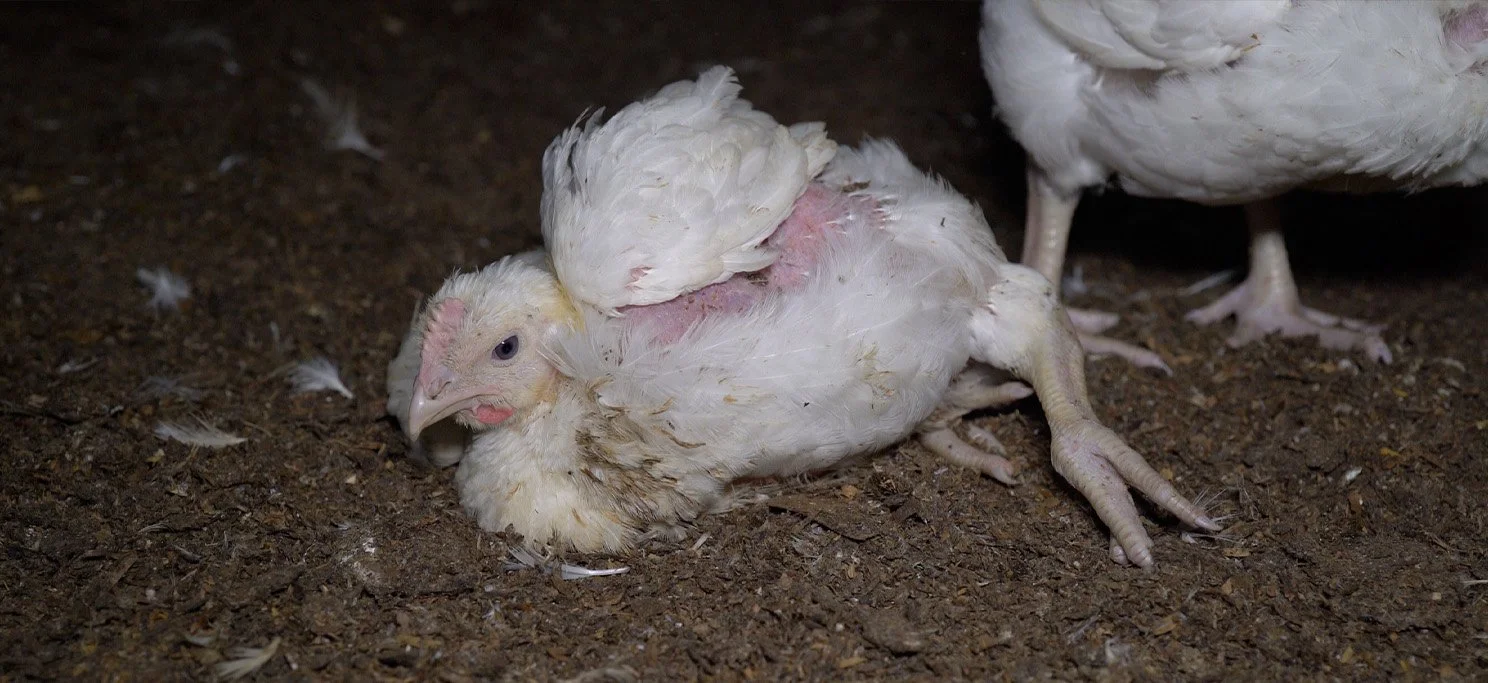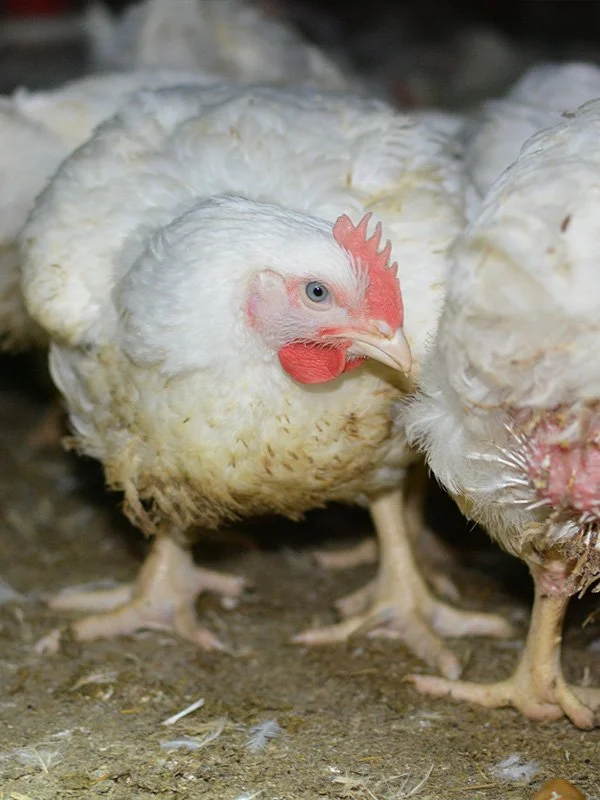Why food business commitments are key to ending chicken suffering
Credit: Farm Transparency Project
In Australia, over 700 million chickens are raised and killed for food each year. Behind the supermarket shelves and fast-food counters lies a reality that most people never see: one where chickens are bred to grow so fast it causes them chronic pain and where crowded sheds are the norm.
Most consumers would be shocked to see the suffering chickens endure, especially when there is a proven better way. By calling on food businesses to endorse higher welfare standards, we can create a better future for chickens.
Fast-growing chickens living in poor conditions.
Almost all chickens bred for meat are fast-growing breeds. They’ve been genetically selected to grow rapidly and to gain weight rapidly. Their young skeletal systems and organs struggle to keep up, and many suffer from lameness, organ failure, and painful bone deformities. Even standing and walking can be difficult for many.
The sheds they’re raised in often house tens of thousands of birds, packed together in low-light conditions. In these conditions, fast-growing chickens struggle to move around freely, placing them at risk of developing infections, skin burns, and lameness. Many will never experience natural light in their short lives.
At the end, most are faced with a painful and outdated slaughter method. Live shackling and water-bath stunning leave some chickens fully conscious when their throats are slit. This suffering is completely legal and completely avoidable.
Credit: Farm Transparency Project
Government and industry are slow to act
Australia’s animal welfare laws are failing chickens. Despite public concern and mounting scientific evidence, government reform is slow and watered down by industry pressure.
The latest government welfare guidelines for meat chickens, endorsed in 2022, fall far short of what’s needed. They don’t require perches or enough space for chickens to move, let alone provisions for natural light or meaningful enforcement. And most critically, they haven’t been written into law, meaning there’s no way to enforce them.
While we continue advocating for stronger legal protections through our Fair Go for Animals campaign, this is a long-term goal. In the meantime, we can help make important welfare changes through corporate leadership and public demand.
Inside a typical chicken farm.
Image: Animal Liberation
Corporate purchasing power drives demand
Most meat chickens are bred to supply large food businesses, like supermarkets, fast-food chains, restaurants, and cafes. These businesses set the standards for their suppliers. When major brands demand higher welfare, producers follow. And that means millions of chickens could be spared from the worst suffering.
That’s where the Better Chicken Commitment comes in.
“Food businesses, especially chains, operate at large scales and have very different relationships with their suppliers than you or I do with the supermarkets we shop at. That means they’re perfectly positioned to lead demand for higher animal welfare products”
What is the Better Chicken Commitment?
The Better Chicken Commitment is a global animal welfare initiative that sets clear, measurable standards for chickens raised for meat. A business can take the pledge, committing to introduce these higher welfare standards for all chickens in their supply chain.
The BCC welfare improvements include:
Switching to higher welfare, slower-growing chicken breeds that promote good welfare
Providing more comfortable, healthy living conditions, where each chicken has enough space, light and clean air
Using slaughter methods that are more humane, with effective stunning and no live shackling
Over 600 major companies worldwide have signed on, including KFC UK and Ireland, Nestlé, Unilever, and Nando’s UK.
In contrast, Australian food businesses are lagging behind, but that is something we can change, together.
You can read more at the Better Chicken Australia website.
A BCC approved chicken farm in the UK.
Credit: RSPCA UK RSPCA Assured.
You have the power to create a higher welfare future for chickens
We know that food businesses listen and respond to their customers. That’s why it’s crucial for concerned people, like you, to speak up and demand that businesses do better for chickens in Australia.
You can help by:
1. Supporting the Better Chicken Commitment
Image: Farm Transparency Project







